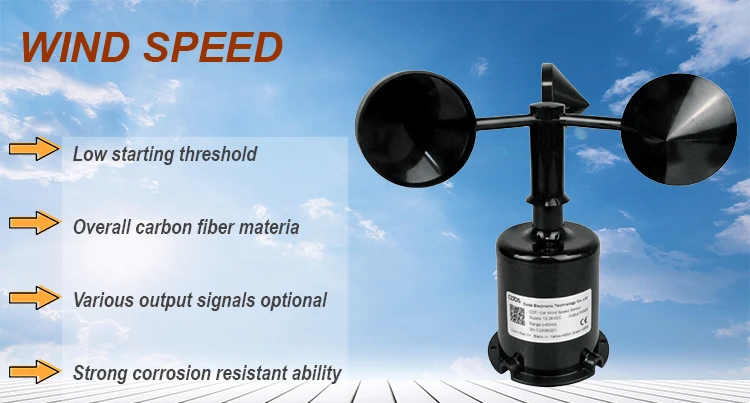
# Anemometer: The Instrument for Measuring Wind Speed
## Understanding Wind Speed Measurement
Wind speed is a crucial meteorological parameter that affects various aspects of our lives, from weather forecasting to aviation and renewable energy production. The instrument specifically designed to measure wind speed is called an anemometer.
## What is an Anemometer?
An anemometer is a device that measures the speed or velocity of wind. The word “anemometer” comes from the Greek word “anemos,” meaning wind. These instruments are essential tools for meteorologists, climatologists, and professionals in various industries where wind conditions are important.
## Types of Anemometers
Several types of anemometers have been developed over time, each with its own advantages and specific applications:
### 1. Cup Anemometers
The most common type features three or four hemispherical cups mounted on horizontal arms. As wind blows, the cups rotate, and the rotation speed is proportional to wind speed.
### 2. Vane Anemometers
These combine a propeller and a tail on the same axis to measure both wind speed and direction simultaneously.
### 3. Hot-Wire Anemometers
Using electrically heated wires, these measure how quickly the wind cools the wire to determine velocity.
### 4. Sonic Anemometers
These advanced instruments use ultrasonic sound waves to measure wind speed by detecting how sound waves are affected by moving air.
### 5. Laser Doppler Anemometers
Employing laser technology, these measure the Doppler shift in light scattered by moving particles in the air.
## How Anemometers Work
The working principle varies by type, but generally:
Cup and vane anemometers measure mechanical rotation caused by wind, converting this motion into electrical signals that can be interpreted as wind speed. More advanced models like sonic anemometers use sophisticated electronic measurements of how wind affects sound wave propagation.
## Applications of Anemometers
Anemometers serve numerous important functions:
- Weather forecasting and meteorological research
- Aviation for airport wind monitoring
- Wind energy assessment for turbine placement
- Building design and construction to assess wind loads
- Environmental monitoring and pollution studies
- Marine navigation and sailing
## Choosing the Right Anemometer
When selecting a wind speed measurement instrument, consider:
Accuracy requirements, measurement range, environmental conditions, data recording needs, and budget. Professional meteorologists often use high-end sonic anemometers, while simpler cup models may suffice for general purposes.
## Maintaining Your Anemometer
Proper maintenance ensures accurate measurements:
Regular cleaning, calibration checks, protection from extreme weather when possible, and proper installation are all crucial for maintaining your instrument’s performance over time.
## The Future of Wind Measurement
Technological advancements continue to improve anemometer design, with developments in wireless connectivity, miniaturization, and integration with other environmental sensors. These improvements are making wind speed measurement more accurate and accessible across various applications.
Keyword: measure wind speed instrument